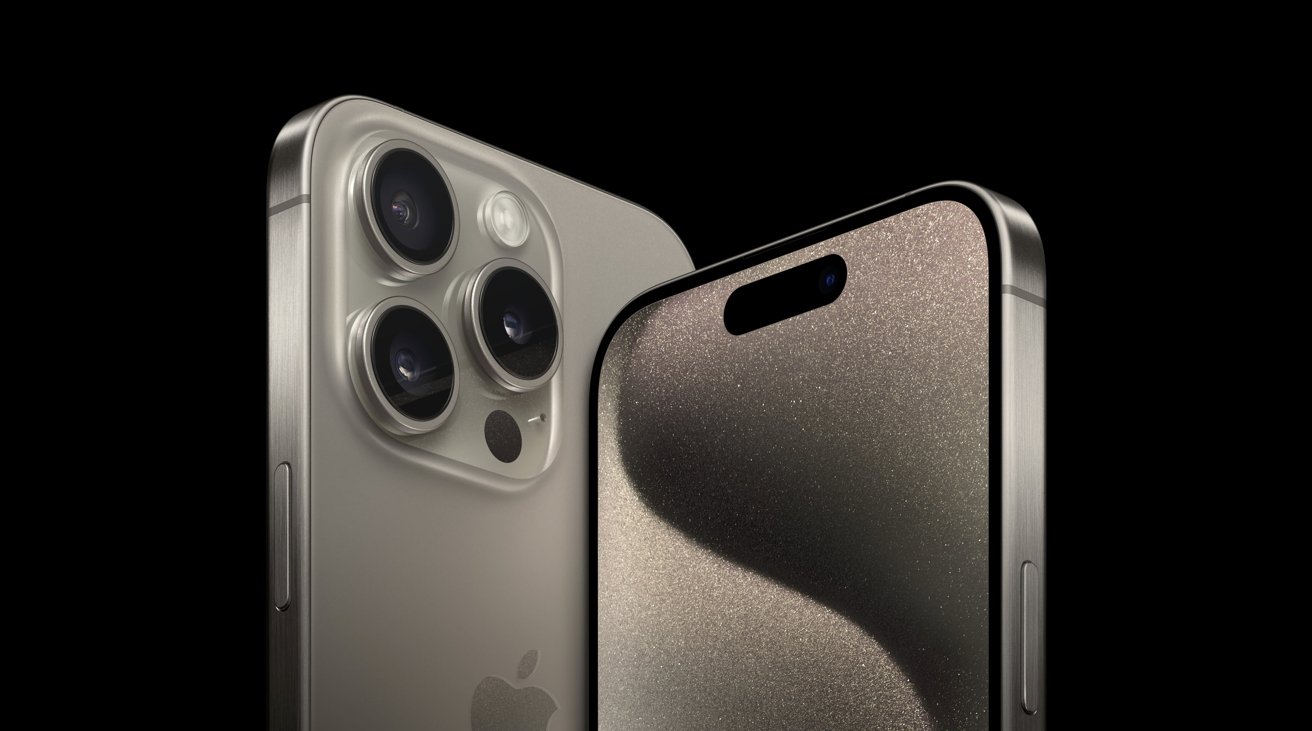Why Apple is focusing on 6G already
Apple's recent listing for a Cellular Platform Architect to work on 6G technology raised some eyebrows from those wondering why is Apple already hiring for 6G, when it's yet to get its 5G house in order. Here's why it's looking so far forward.

iPhone 15 Pro and Pro Max
Signals indicate that Apple will end its partnership with Qualcomm sometime in the next couple of years, once it has a capable modem chip of its own to use for the iPhone. While the company's current semiconductor efforts may be focused on 5G engineering, that doesn't mean planning for 6G isn't necessary. In fact, Apple's been hiring 6G engineers for a while.
The answer to this all lies in how the telecom business works.
Telecom's ten-year cycle, explained
Roughly speaking, the telecom industry plans generations of new technology in 10-year increments. That doesn't imply that cell service providers obsolete each new generation of phone technology in that span. But they've been rolling new generations of tech like this for decades.
Mobile networks are a huge global business. To make the tech work means hundreds of billions of dollars invested in physical infrastructure, from antenna towers to network operation centers, the staff to run and fix the machines that make it work.
That ecosystem goes from the networks to the handsets that operate on them, and the multitudes of other devices that connect to mobile networks -- industrial machines, medical devices, vehicles, all manner of IoT gadgets.
Mobile networks have become essential infrastructure throughout the world and matters of national security for governments. And there is a lot more than just public commercial networks. There are private networks used by businesses, used by governments, used by military agencies.
So having some sort of overarching plan to deploy new tech gives all the industry's stakeholders common goals to work towards, as the technology continues to evolve and common targets to reach as they build out their networks.
Behind the curtain: the 3GPP
Today, the development of new generations of cell phone technology is coordinated through a standards body anachronistically called the 3rd Generation Partnership Project, or 3GPP. Formed at the end of the 90s, the group united seven disparate international telecom standards development organizations, with the goal of creating unified standards for deploying 3G mobile communications worldwide, and its momentum has carried it forward to today.
Today the 3GPP creates specifications that cover mobile technology soup to nuts - specs describe how core network operations should work and chips used in handsets, along with the Radio Access Networks that connect them together. The 3GPP maintains a roadmap for the development and deployment of these new features.
About once a decade, the 3GPP and other primary stakeholders in mobile communications introduce a new generation of tech. 3G networks, for example, first lit up in the early 2000s. 4G networks first appeared in 2009, and 5G networks began to light up in 2018.
Mobile network operators periodically "sunset" their networks, to reclaim radio frequency bandwidth that's allocated for newer systems. This happened in 2022 in the United States, as operators shut down their 3G networks to make way for improved 5G coverage.
So new generations of mobile service pop up every 10 years or so. And they stick around for a couple of decades. Eventually being replaced with tech that's already been deployed in the field.
Beyond 5G
5G's march of progress continues under the 3GPP's aegis. Since 2017, the standards group has introduced four major releases of new 5G specifications. We're up to Release 18 - known in telecom circles as 3GPP R18 - with R19 expected in 2024.
These latest specs are called "5G Advanced," with improvements to service continuity, reliability, speed and reduced latency all on the table. Many of these changes seek to improve the quality of existing 5G service, but they're the groundwork for what's to come with 6G as well -- with an eye towards speeds up to 100 times faster than 5G.
The round trip time between from specpublication to implementation is measured in years. A practical example you might be familiar with is the iPhone 14's "Emergency SOS via Satellite" feature.

Apple helped GlobalStar build out its worldwide network of ground stations
The roots of this technology first coalesced with the publication of a 3GPP spec in early 2020, approving the use of band n53 for satellite-to-phone communication. It'd take another year before Qualcomm announced chips that supported the spec, and another year and a half before Apple introduced the iPhone 14.
A lot of work was done in the interim, including loads of engineering from Apple and the company's considerable investment and cooperation with satellite comms company GlobalStar, to build out a worldwide relay network.
But with that almost three-year timeline in mind, it's understandable why Apple would be hiring now for 6G talent, even though the 6G spec is still a work in progress. The conversation around 6G has already been going on in the telecom business for years, and the circle of life continues.
In fact, Apple joined that conversation almost as soon as 5G was out the door as a founding member of the Alliance for Telecommunications Industry Solutions (ATIS), alongside Google, VMWare, Cisco and others.
Nothing happens overnight in a business like telecom. Apple is wisely beefing up its engineering presence to make full use of the tech by the time it gets here.
Read on AppleInsider

Comments
https://www.eetimes.com/apple-qualcomm-fight-over-engineers/
The basic roadmap (pending the nitty gritty) has already been taken, which can be considered a milestone for the future standard.
https://www.itu.int/en/mediacentre/Pages/PR-2023-12-01-IMT-2030-for-6G-mobile-technologies.aspx
In terms of what can be done (beyond the usual suspects of speed, assurance, amount of connected devices, latency etc) there are some interesting takes on using the wireless signals themselves as sensors (eliminating the need for certain wearables).
5G can already do the 'sensing' in things like ZE-IoT.